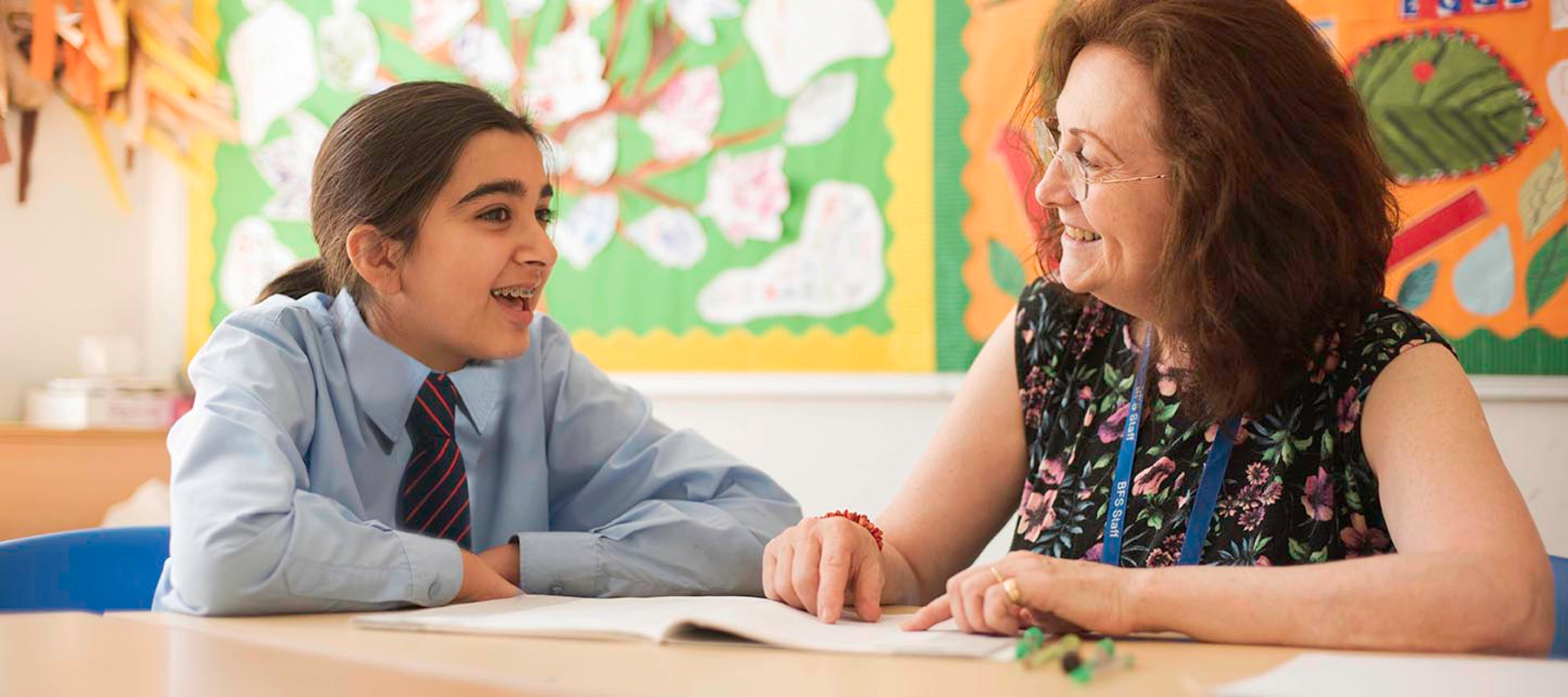- BFS
- About us
- Parents
- Students
- Sixth Form
- Contact us
- VLE
- Open Event
- Open Event
- Open Event
- Sixth Form Subject Videos
- Assessment in KS3
- Exam - Advance information

| Sonnet | A sonnet (pronounced son-it) is a fourteen line poem with a fixed rhyme scheme. Often, sonnets use iambic pentameter: five sets of unstressed syllables followed by stressed syllables for a ten-syllable line. |
| Prologue | A separate introductory section of a literary, dramatic, or musical work. |
| Hamartia | A hero or heroine's fatal flaw / weakness that will eventually destroy them. |
| Protagonist / antagonist | A protagonist is the main character in a story. An antagonist is their main enemy / rival. Romeo and Juliet are the eponymous (their names are in the title) protagonists, Tybalt is the antagonist. |
| Foreshadowing | Foreshadowing is a literary device in which a writer gives an advance hint of what is to come later in the story. Foreshadowing often appears at the beginning of a story, or a chapter, and it helps the reader develop expectations about the upcoming events. |
| (Non) Chronological narrative | A chronological narrative is a story told in the order that events happened. A non-chronological narrative may start in "the present" before using a flashback to talk about events in the past. |
| Dual perspective narrative | A narrative (story) told from two different viewpoints e.g. a third person narrator and from a character's perspective. |
| Motif / extended metaphor | Motif is a literary technique that consists of a repeated element that has symbolic significance to a literary work. Sometimes, a motif is a recurring image. Other times, it's a repeated word, phrase, or topic expressed in language. |
| Tone | Formal or less formal? Serious or humorous? Factual or full of opinions? Balanced or biased? |
| Standalone paragraph | A one sentence paragraph - normally used for emphasis. |
| Atypical | Something that is different to others of the same type, group, or class. |
| Neurodivergent | A relatively new term, neurodivergent simply means someone who thinks differently from the way the majority (referred to as neurotypical) expect. Neurotypical means the opposite –someone whose brain behaves in the same way as the majority of society. |
| duality | When one person has two sides to their personality or character. |
| Protagonist | The leading character or one of the major characters in a play, film, novel. |
| Epistolary novel | An epistolary novel is a novel written as a series of documents. The usual form is letters, although diary entries, newspaper clippings and other documents are sometimes used. Recently, electronic "documents" such as recordings, blogs, and e-mai |
| Motif / extended metaphor | Motif is a literary technique that consists of a repeated element that has symbolic significance to a literary work. Sometimes, a motif is a recurring image. Other times, it's a repeated word, phrase, or topic expressed in language. |
| Tone | Formal or less formal? Serious or humorous? Factual or full of opinions? Balanced or biased? |
| Credible / expert opinions | Including statements / quotations from experts or others, to make your writing / arguments seem more believable. |
| Standalone paragraph | A one sentence paragraph - normally used for emphasis. |
| Ironic / irony | Express something other than and especially the opposite of the literal meaning, usually for humorous effect / to emphasise an idea. |
| Inclusive pronouns | Using pronouns such as you / your, we / us / our to engage an audience. |
| Authorial intent | The aim that a writer is trying to achieve e.g. to persuade their audience to take a certain action, to point out a particular issue. |
| Overview | A brief summary of an idea, text or issue. |
| Romanticism | A literary, artistic, and philosophical movement originating in the 18th century. Often focussed on autobiographical material, thoughts and feelings, common human values, and an appreciation of nature. |
| Literary allusion | Ideas, characters, imagery etc. referencing another famous book, poem, play etc. |
| Dual heritage | A person from two or more cultural or ethnic backgrounds. |
| Authorial voice | A character or narrator voicing an author or poet's own personal opinions. |
| Dramatic monologue | Writing a poem to tell a story from the perspecive or viewpoint of a specific character or historical figure. |